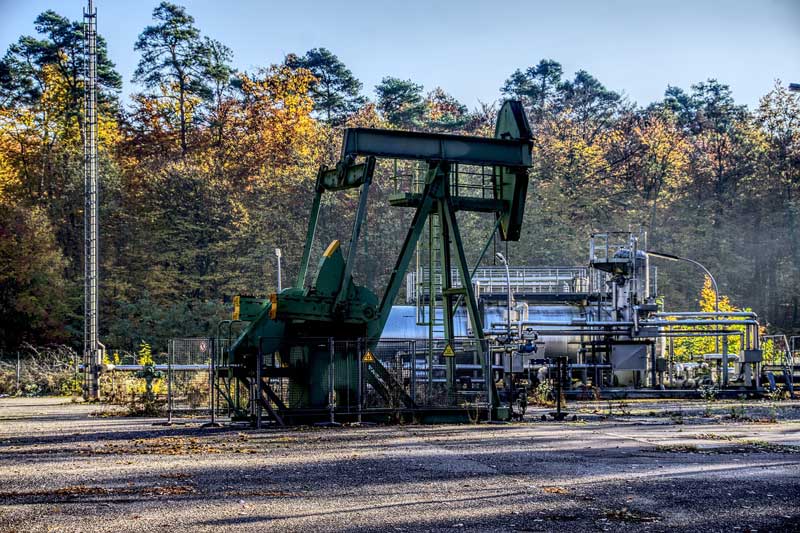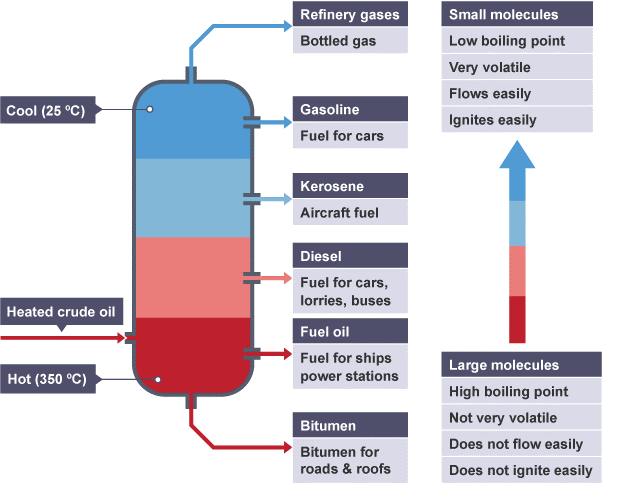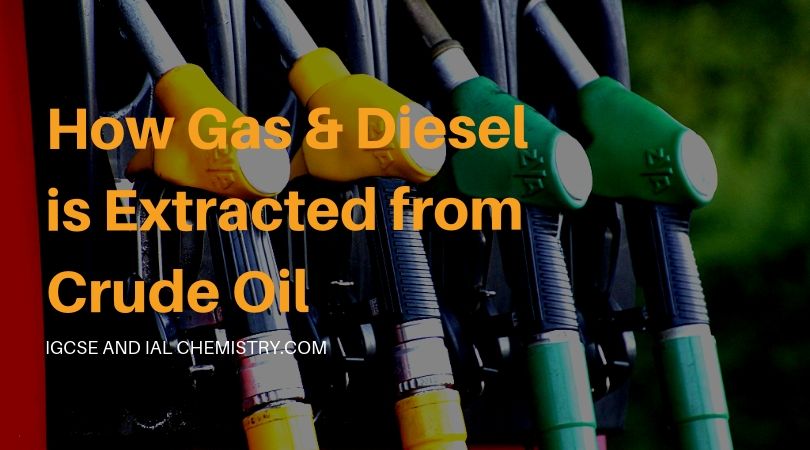Gas and Diesel are two of the most common parts of our life. Can you imagine a life without them? Probably not! Otherwise would still be riding horses and not cars! Gas is the shortened form of Gasoline, Brits call Gasoline “Petrol”. But do we find gas and diesel in their pure form from underground? The simple answer is NO! They need to be extracted and purified from Crude Oil (I will explain what crude oil is later on in this blog post).
Before you start going through this blog, I am assuming that you have a good grasp of Organic Chemistry and Hydrocarbons. If not, don’t worry, simply view my in-depth blog on Organic Chemistry and Hydrocarbons. Even though if you have an excellent grasp of organic chemistry, I would still suggest you keep that blog post open in a new tab and proceed with this post.
What is Crude Oil?
Crude oil is a viscous brown liquid obtained from under the seabed. Crude oil is a mixture of different types of hydrocarbons. Short-chain to long-chain hydrocarbons. We can also say that it is a mixture of alkanes of different sizes. Once again if you are confused about what hydrocarbon is, please have a look at my blog.

How is Crude Oil formed?
Millions of years ago, when creatures died in the sea, their bodies got covered with sediments and rocks. Then over time under extreme temperatures and pressures, their bodies decomposed and converted to crude oil. As crude oil is formed from the remains or fossils of ancient animals, hence it is also known as a “Fossil Fuel“.
What happens when all the Crude Oil is used up?
When all the crude oil is used up it is impossible to recreate it as it takes millions of years to produce. Therefore, people are already looking for renewable energy sources such as Wind, Water, Solar, etc.
Different Fractions of the Crude Oil and their Properties
As I have mentioned before, crude oil is made of hydrocarbons of different sizes. The larger the hydrocarbon, the higher their boiling point. That is due to intermolecular forces. The larger the hydrocarbon, the higher their intermolecular forces and the higher their boiling points.
So that is why different parts or fractions of the crude oil have different boiling points. Each fraction is made up of a group of hydrocarbons with a range of carbon numbers, the combined group of hydrocarbons have a specific boiling point range. For example, Gasoline is a group of hydrocarbons in the crude oil with a carbon number range from 4-12, with a boiling point range of 4-12 °C. This property is very important and depending on this property different fractions of the crude oil are extracted.
Extracting gas and diesel from crude oil
Fractional Distillation
Fractional distillation is the method using which different fractions of the crude oil are separated. Just keep one concept in mind, different fractions of the crude oil have different boiling points.
In this method, firstly the crude oil is heated up and then passed on to a tower called “Fractionating column“. The fractionating column is vertically divided into separate chambers. The fractions of the crude oil with high carbon numbers have high boiling points, so those remain at the bottom chambers. While the fractions with low boiling points move to the upper chambers. Each fraction is collected from its respective chambers. Please have a look at the diagram below.

The concept of fractional distillation of crude oil to get different fractions is very very important. So if you are still confused about how it works, then please have a quick look at the short animated video below. I hope the concept of fractional distillation will be absolutely clear after that.
Properties of Gas and Diesel
Gas and Diesel are two of the most important and widely used fractions in crude oil. That is because gas is used in cars, while diesel is used in heavy machines such as trucks, lorries, generators, and other types of machines. Now let’s have a side-by-side comparison between gas and diesel.
| Gas | Diesel |
| Carbon Number range: 4-12 | Carbon Number range: 12-20 |
| Boiling Point Range: 30-120 °C | Boiling Point Range: 170-360 °C |
| Uses: Fuel for cars | Uses: Fuel for trucks & other kinds of heaver pieces of machinery. |
The Diesel fraction contains heavier hydrocarbons compared to gas, they have a higher ignition point, it is difficult to use them in small car engines, hence they are used in heavy machines. On the other hand, the gas contains lighter hydrocarbons compared to diesel, hence they are easier to ignite. Smaller car engines can easily burn gas, hence gas is the main fuel for car engines and is the most demanding fuel among all the other fractions of crude oil.
Conclusion
I hope my in-depth about extracting gas and diesel from crude oil helped you out. If you are going to take a chemistry exam, you better have a look at the other blogs on my website, you might find something useful. If you found this blog useful then share this with your friends and help them out too!

